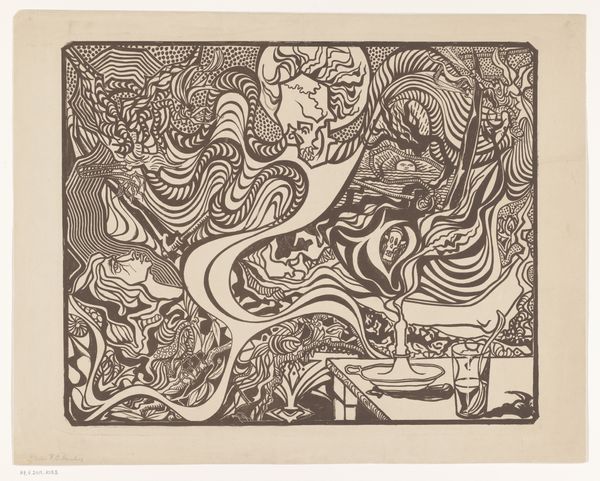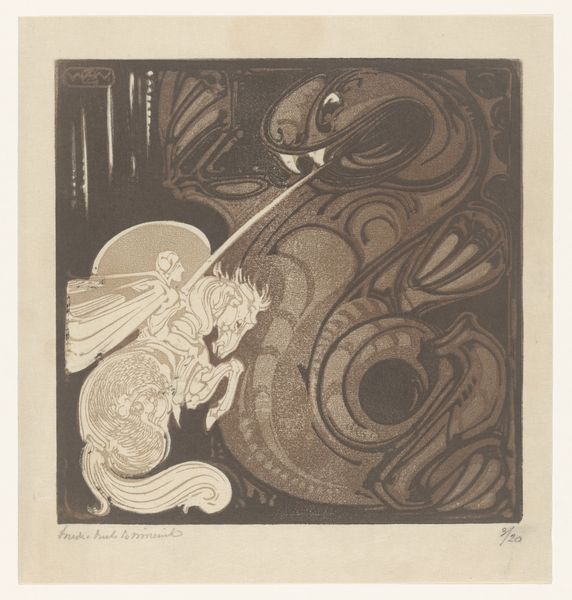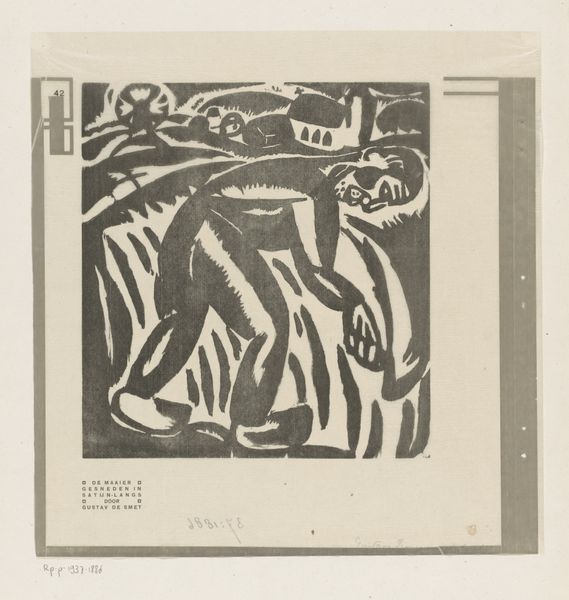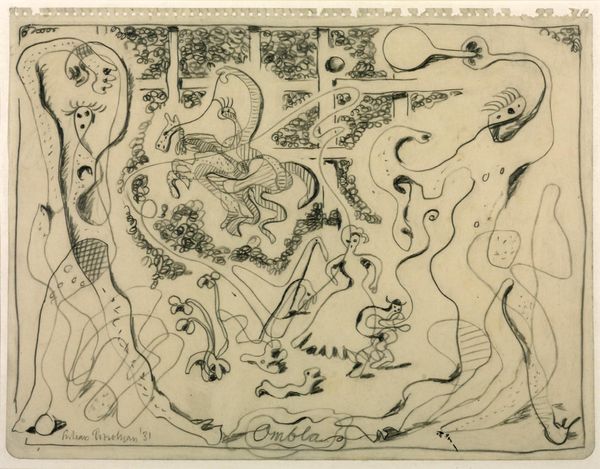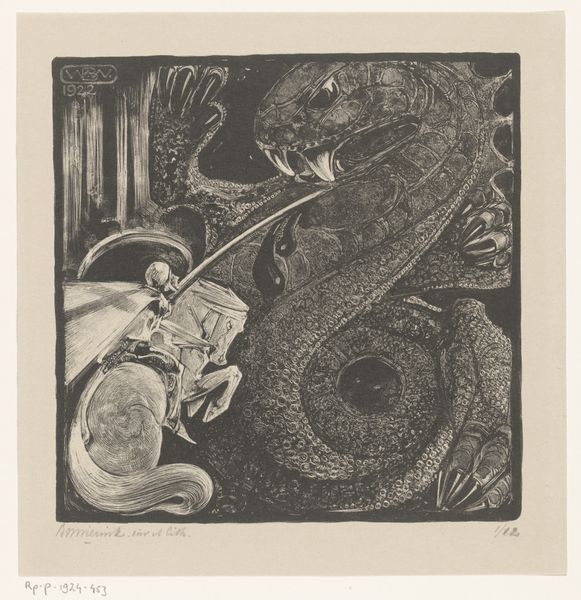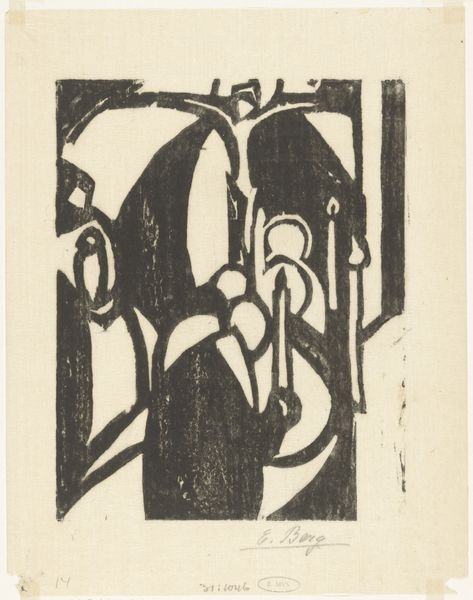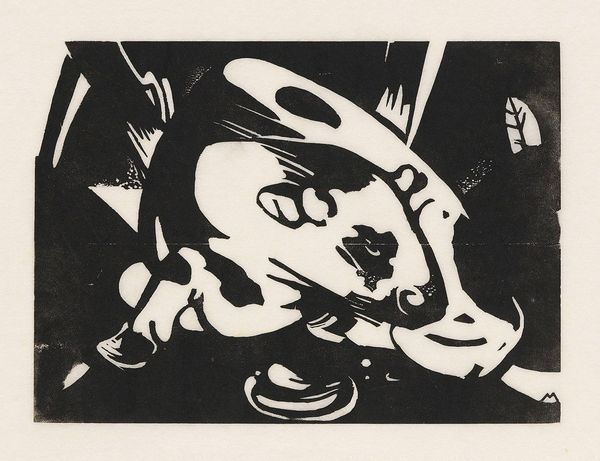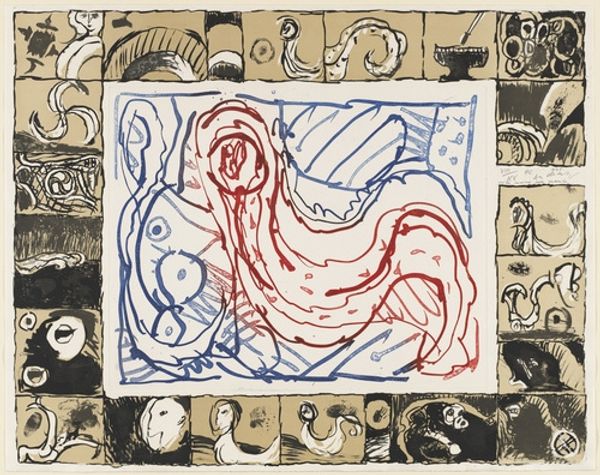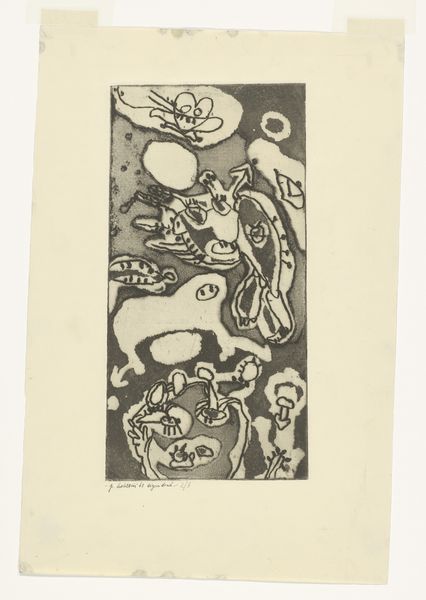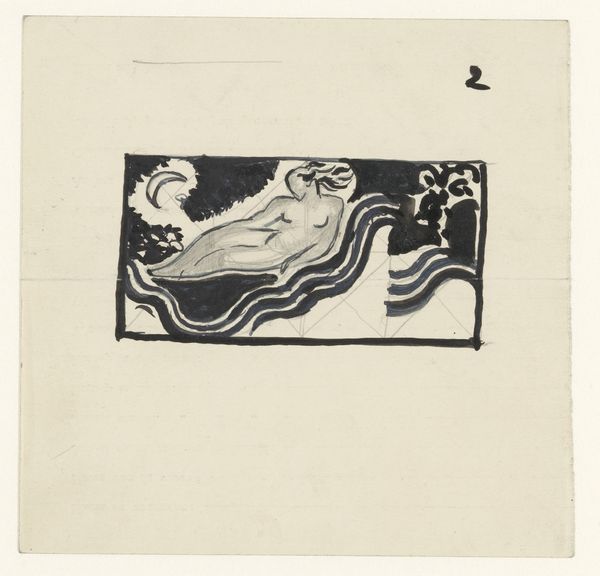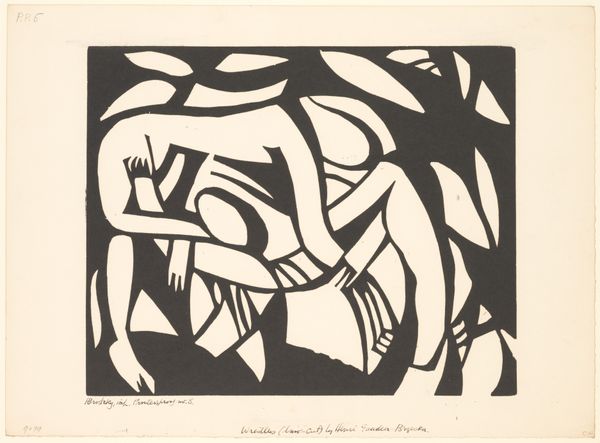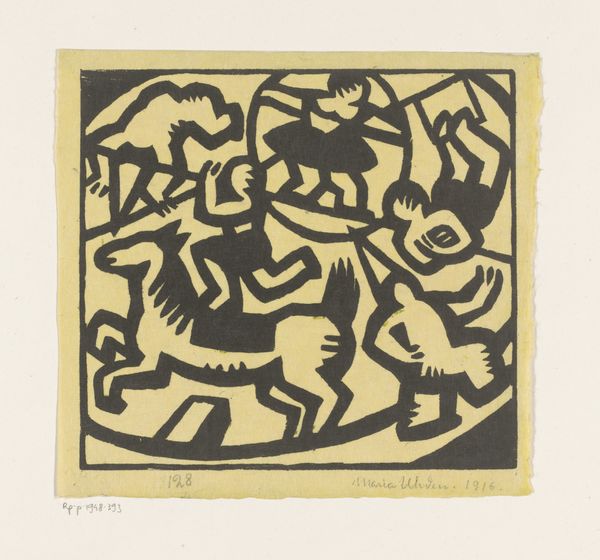
Dimensions: height 228 mm, width 203 mm
Copyright: Rijks Museum: Open Domain
Editor: This is "St. Joris" by Bernard Willem Wierink, created sometime between 1920 and 1923. It's a woodcut, using ink to make stark lines and contrasts. I find it pretty striking. What can you tell me about it? Curator: Well, first, I'd ask, what is it about the visual language used that evokes such a striking response? Is it perhaps the use of strong lines within the symbolism? Consider how "St. Joris," or Saint George, has historically represented ideals of masculine bravery. Now look at Wierink's work in the post-World War I era. Editor: So, the context shapes it? I mean, I see this knight who appears smaller in stature, almost vulnerable. The dragon isn’t this monstrous figure but more abstract and unsettling. It's a history painting but something seems changed. Curator: Exactly. The traditional heroic narrative is complicated. What could this subversion represent given the socio-political climate? How might we connect the anxieties and trauma of a war-torn society with the reimagining of this symbolic form? This isn’t simply a depiction; it's an interrogation of power, maybe of traditional masculinity itself in a moment of intense social change. Editor: So you're saying Wierink is using this historical and mythical figure to question societal values. How interesting. Curator: Precisely. Art invites us to consider perspective. By drawing on our historical and cultural understanding, we find art allows for social dialogue. What do you think? Editor: This has shown me how looking into social context gives art such broader implications! Thanks. Curator: My pleasure. Let's keep these dialogues flowing.
Comments
No comments
Be the first to comment and join the conversation on the ultimate creative platform.
